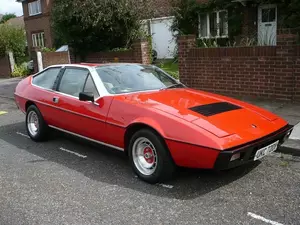
| Engine | 0—60 mph | 0—100 km/h | Top Speed | Averange Economy |
|---|---|---|---|---|
| 2.2 | 6.8 s | 7.2 s | 131 mph | 19 mpg |
| Engine | 2.2 |
|---|---|
| 0—60 mph | 6.8 s |
| 0—100 km/h | 7.2 s |
| Top Speed | 131 mph |
| Averange Economy | 19 mpg |
In 1975 Lotus Eclat 0-60 acceleration was 6.8 seconds.
Lotus Eclat 0-60 mph was up to 29% faster in 1975 than world's average.
In 1975, Lotus Eclat 0-60 mph to car weight ratio is shown below:
| Vehicle | Acceleration 0—60 mph (0—100 km/h) | Maximum speed | Acceleration to passenger ratio | Fuel consumption at high speed | Fuel type / gearbox |
|---|---|---|---|---|---|
| 2.2 | 6.8 s to 60 mph (7.2 s to 100 km/h) | 131 mph (211 km/h) | 3.4 s to 60 mph / person | 24 mpg (10 L per 100 km) | Petrol (Gasoline) |
| Vehicle | 2.2 |
|---|---|
| Acceleration 0-60 mph (0-100 km/h) | 6.8 s to 60 mph (7.2 s to 100 km/h) |
| Maximum speed | 131 mph (211 km/h) |
| Acceleration to passenger ratio | 3.4 s to 60 mph / person |
| Fuel consumption at high speed | 24 mpg (10 L per 100 km) |
| Fuel type / gearbox | Petrol (Gasoline) |